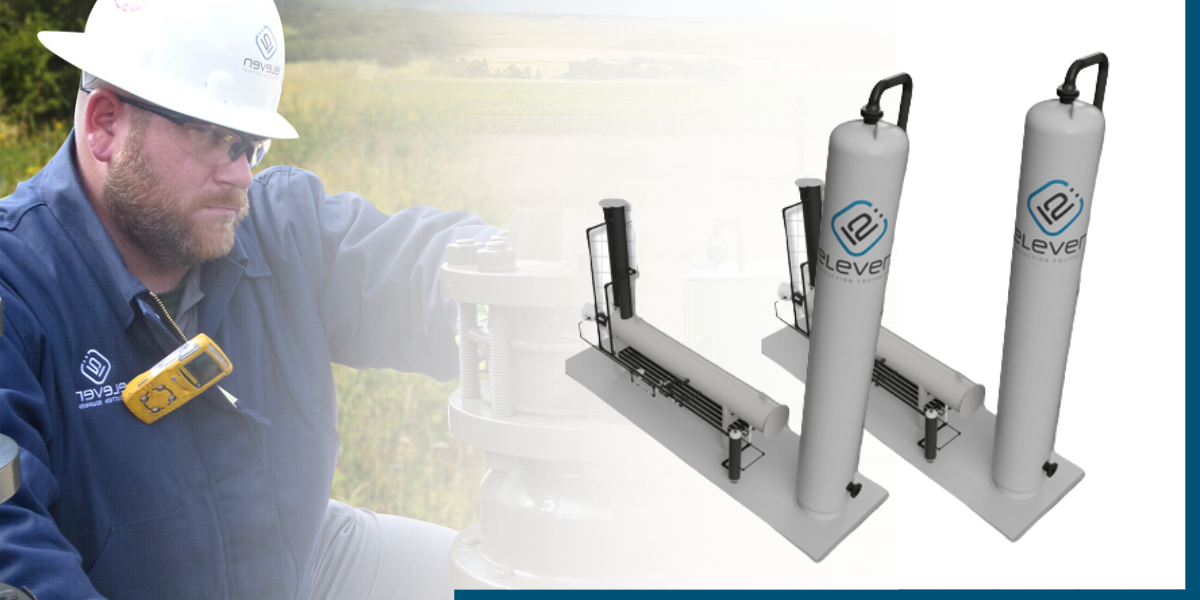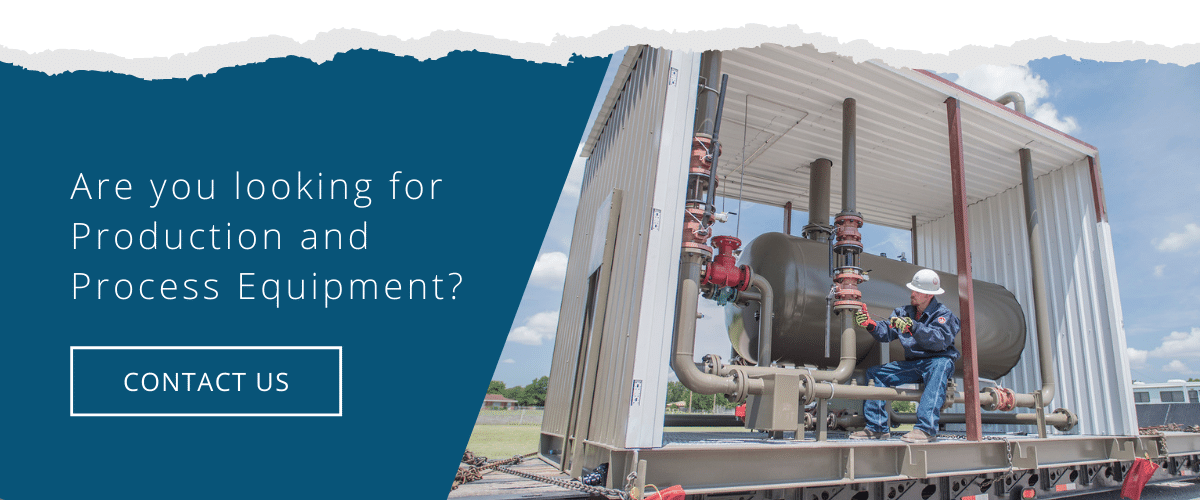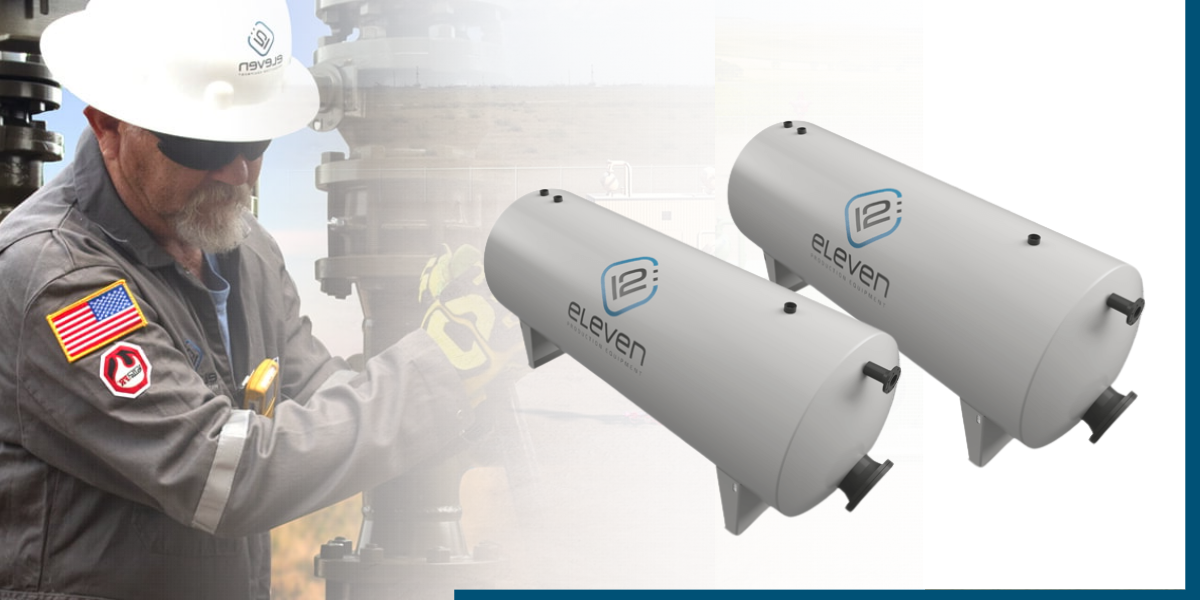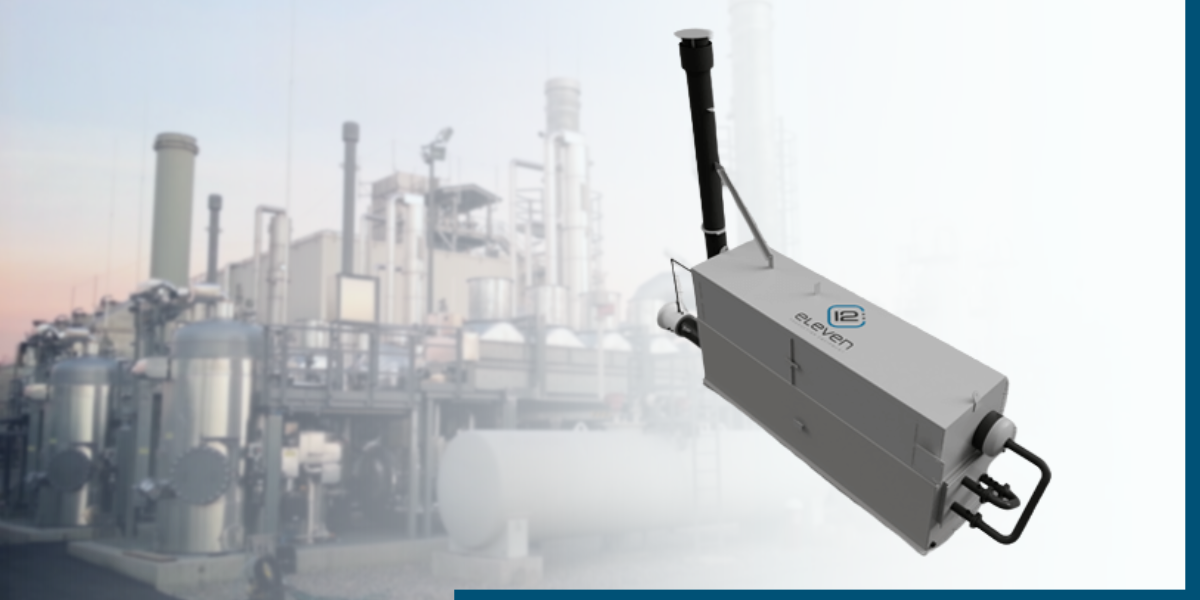Free Water Knockout (FWKO): What You Need To Know
Free water knockouts (FWKO) are an essential component in the oil and gas industry, designed to remove any free water present in the production...

In the oil and gas industry, plant operators are constantly trying to find ways to remove contaminants and produce purer products. A major problem contaminant associated with natural gas is water vapor. To get rid of moisture from recovered natural gas, industrial manufacturers use different dehydration methods, like triethylene glycol processes.
Here's everything you need to know about gas dehydration units and how they can be used to eliminate unwanted moisture from recovered natural gas.

Glycol dehydrators, also known as gas dehydrators or TEG units, are used to remove water vapor from natural gas. The process of dehydration is important for two reasons.
First, water vapor can cause corrosion in pipelines and other gas-handling equipment. Second, water vapor can condense and freeze in low-temperature applications, which can result in clogged pipes and decreased efficiency.
To operate a gas dehydration unit, natural gas is passed through a tower containing a desiccant, such as molecular sieve or activated alumina. As the gas flows through the tower, the desiccant removes water vapor from the gas stream, leaving dry natural gas on the other side. Glycol dehydrators are typically used in natural gas processing plants and pipeline facilities.
There are several vital components a glycol dehydration unit must have to properly dry natural gas. These key parts of a glycol drying setup include:
While the first two components are crucial to natural gas drying, the latter three are primarily used for extracting water from the air so that it can be reused.
As part of Glycol Dehydration Systems, Glycol dehydrators, or TEG dehydration units, integrate natural gas drying phases with glycol regeneration processes. To start, water vapor mixed with natural gas is sent through a feed gas inlet on the gas scrubber which eliminates free water associated with it. As a result, most of the suspended water in the stream as well as particulate impurities and hydrocarbons are removed at this point. However, the natural gas is still not “dry” enough and must go through additional drying before use.
Afterwards, the gas is led through adjoining channels to a contact tower, where the concluding stage of drying occurs. A regular contact tower consists of several precisely positioned levels containing dehydrated or “lean” liquid glycol. Generally, natural gas is let in from below via an inlet at the bottom of the contact tower and rises until it reaches the top of the column while being in unceasing exposure to glycol fluid at different levels. As the gas continues upwards, any leftover moisture is extracted until finally exiting via an outlet channel at dried state ready for storage tanks or other treatment methods.
While this occurs, the glycol solution in the contact tower becomes "rich" as it absorbs moisture, and this necessitates its regeneration. As dry glycol is being fed into the process via one inlet, wet glycol is concurrently being removed from another outlet and channeled to a regeneration process.
The process of lean glycol reformulation starts with "wet" glycol being put into a three-stage flash separator. This machine removes any water vapor, particulate impurities, and oils that have accumulated. These contaminants are sent to storage tanks until they can be discharged later on. The now impurity-free glycol is moved to a reboiler unit.
The reboiler uses distillation to separate the water from the glycol. Water boils at 212oF, but for glycol, this number is 550oF. If ethylene glycol reaches 404oF, it will start to degrade--so most operators like to keep their processes between 212-400oF. The final step is eliminating any leftover water in the form of steam so that only dry glycol remains. This "lean" product can now be sent back to the contact tower where it will help with further natural gas dehydration cycles.
Gas dehydration units are an essential part of the natural gas industry, and they provide many benefits. By removing water vapor from the gas, they help to prevent corrosion and freezing in pipelines.
In addition, they help to improve the quality of the gas, ensuring that it meets specifications for end use. Gas dehydration units are a critical part of the natural gas industry, and they provide many benefits to both producers and consumers of natural gas.
Disruptions to both the quality of natural gas and manufacturing equipment can occur when water vapor is retained within natural gas.
Some significant reasons for gas dehydration include:
If you're in the market for a gas dehydration unit, you'll have a few different options to choose from. Glycol dehydrators and TEG units are the two most common types of gas dryers on the market today.
Glycol dehydrators work by passing the gas through a solution of glycol and water. The glycol absorbs the water from the gas, and then the gas is passed through a series of filters to remove the glycol.
Dehy units work similarly, but instead of glycol, they use a solid desiccant material to absorb the water from the gas. Dehydrators are also available with either forced or natural convection. Forced convection units have a blower that circulates the gas within the unit, while natural convection units rely on thermal currents to circulate the gas. When choosing a gas dehydration unit, it's important to consider your specific needs and application.
Glycol dehydrators are well suited for low-volume applications, while TEG units are better for high-volume applications. Dehydrators are also available in a variety of sizes to accommodate different flow rates.
At 12:eleven, we offer a broad range of efficient gas dehydration units useful in diverse industrial applications. We also provide cost-effective equipment and parts to optimize your industrial air-drying needs at all stages of manufacturing.
To learn more about our products and services, please contact us online today.
What Are The Different Types of Oil and Gas Separators? - What an oil and gas separator is, how they work, and all of the different types of separators that are currently being used in the field today.
What Are the Principles of Oil and Gas Separation? - Discover everything you need to know about the upstream oil and gas separation process
The Importance of ESG in the Oil and Gas Industry - Let's take a closer look at ESG in the oil and gas industry, and discuss how recent orders by the Biden administration have affected the scene.
All About Vapor Recovery Towers (VRTs) - Let's discuss the fundamentals of vapor recovery towers: what they are and how they function along with their many advantages for businesses.
As a specialty company providing custom design, engineering and fabrication of production and process equipment, we are dedicated to doing what’s right for our customers and passionate about creating value on every project.
We leverage the field expertise of our design and engineering group together with our diversified manufacturing capabilities to deliver a broad range of innovative surface production equipment - including Separators, Treaters, Free Water Knock Outs, Bulk and Test Packages, Indirect Line Heaters, Gas Production Units, Gas Dehydration Units, Glycol Contact Towers, Vapor Recovery Towers, Oil Stabilizing Towers.

Free water knockouts (FWKO) are an essential component in the oil and gas industry, designed to remove any free water present in the production...

Gas Production Units (GPUs) are a crucial component of the oil and gas industry. They play a significant role in the extraction, processing, and...

Piping modules and spools are an important part of any piping system. They help to keep the fluid in the system moving by providing a path for it to...